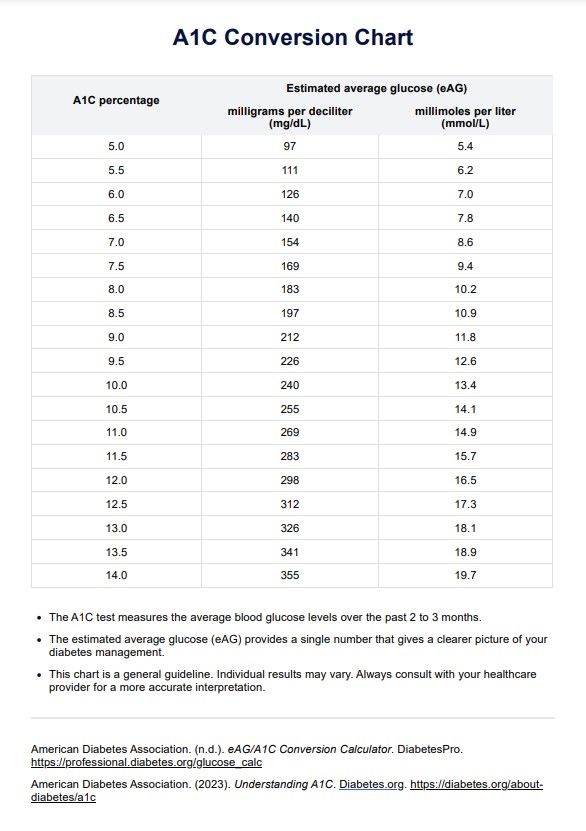If the blood sugar in your red blood cells is 140 mg/dL, your estimated A1C would be approximately 6.5%. This is calculated using the formula eAG = (28.7×A1C)−46.7. For easier conversion, access our template, which contains a table of A1C percentages in intervals of 0.5% and their equivalent eAG value in mg/dL and mmol/L.

A1C Conversion
Effortlessly convert A1C to average blood sugar levels with our A1C Conversion Chart. Simplify diabetes management today with this free template.
A1C Conversion Template
Commonly asked questions
To convert A1C numbers at home, you can use the formula eAG=(28.7×A1C)−46.7 to calculate your estimated average glucose in mg/dL from your A1C percentage. Youcan also use our template to see the equivalent eAG value for each A1C percentage.
You can calculate your A1C by measuring your average blood glucose levels over the past two to three months, typically using a continuous glucose monitor (CGM) or regular blood glucose testing, and then applying the formula A1C=(eAG+46.7)/28.7 to estimate your A1C percentage from your eastimated average glucose level.
EHR and practice management software
Get started for free
*No credit card required
Free
$0/usd
Unlimited clients
Telehealth
1GB of storage
Client portal text
Automated billing and online payments











